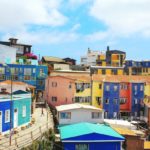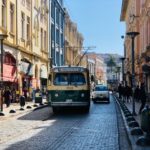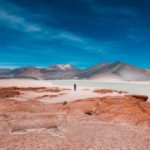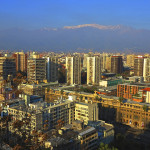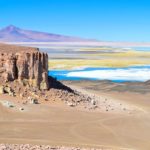A Long Weekend in Chiloe, Chile
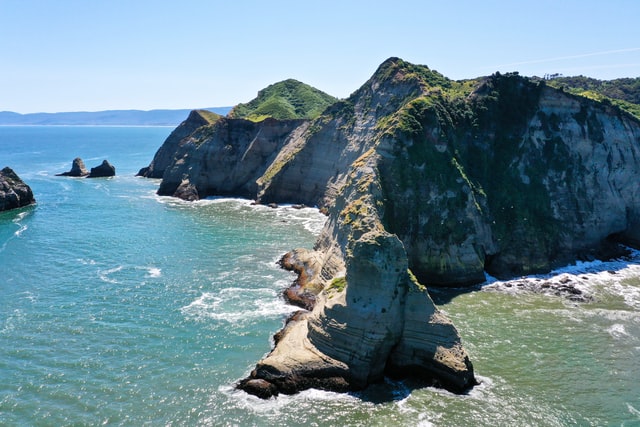
As much as I enjoy living in Santiago, I cherish the chance to get out of the city (and the smog) every once in a while. Thankfully, Chile is brimming with beautiful, enchanting, and exciting sites to explore. Over a long weekend, another English teacher and I decided to seek out the fresh air in Chiloe, an archipelago in the south of Chile. As Chiloe is 1,200 miles south of Santiago, I thought that it would be bitterly cold and rugged. I was completely surprised by what I found. Isla Grande, the archipelago’s main island, is rolling hills blanketed by a patchwork of lush, vibrant greens.
One of Chiloe’s most interesting characteristics is its history. It has long been home to the Mapuche people, the only group in all of South America who did not surrender to the Spanish conquistadors. When the Chilean nationalists fought for independence, Spain found themselves joining forces with the Mapuche.
A Long Weekend in Chiloe, Chile.
The last Spanish-held fortress in Chile is located in the town of Ancud. Called Fuerte San Antonio, the ruins of what was once a fort lie just outside central Ancud. All that remains now is a four-foot wall peppered with canons, perched on a picturesque, tranquil hilltop overlooking the Pacific Ocean.
Another of Chiloe’s main towns, Castro, houses some of Chiloe’s most well-known tourist attractions: the Iglesia San Francisco and the palafitos. Iglesia San Francisco is one of Chiloe’s 16 UNESCO World Heritage Sites. It is unlike any church I have ever seen: sunflower yellow and capped with lavender steeples, Iglesia San Francisco is hard to miss.
The interior appears much like any Catholic cathedral, except that it is completely made of wood. This lends a welcoming, warm tone to the otherwise grand, impressive style that is typical of cathedrals worldwide.
One of Chiloe’s most interesting characteristics is its history. It has long been home to the Mapuche people, the only group in all of South America who did not surrender to the Spanish conquistadors.
Castro’s palafitos are vibrantly painted homes and shops built on stilts over the ocean. Walking down to the pier, we were easily able to find a boat tour (about 5.000 CLP), which allowed us to admire these delightfully colored buildings from the water. There are many palafito restaurants and hostels in Castro that provide splendid views of the tide approaching and receding, such as Mercadito or Café del Puente.
Visitors to Chiloe should learn a bit of Chilote folklore, which is replete with fascinating mythical characters and lessons. On one of our days in Castro, we set out to learn more about Chilote legends by visiting Muelle de las Almas. This site, on the western coast of Isla Grande, has been known to the Mapuche people for generations, but only became a tourist attraction several years ago, when an artist created a physical rendering of the Mapuche legend.
You see, the Mapuche believe all people come from one big soul, and that when an individual passes away, their spirit has to find the original soul to rejoin it. However, there are only certain places in the world that this can happen, and the Mapuche believe that this cove in Punta Pirulil is one of them, giving it the name Muelle de las Almas, or “the dock of souls.”
Sign up for a FREE online writing workshop here.
We used a tour company, affiliated with our hostel in Castro, to travel to Muelle de las Almas, about one and a half hours away from Castro. Upon arriving at the park where the muelle is, we hiked for a little over an hour, traversing undulating hills, with expansive views of the Pacific and dramatic cliffs to the east and west. About an hour into our hike, we reached the top of a small hill, and there on the other side, at the hill’s base, was the muelle—a dock on land that reaches out as if to send off its subjects into the sky.
As we descended, the tranquility that had been emanating from the all around us on the trail became intermittently interrupted by frenetic, ferocious screams, materializing from midair. It turns out these were seals sunbathing and fighting on a rock, partially hidden from sight. This spot—with its views of the jewel-toned sea, rolling hills, and neighboring cliffs—makes for a hard-to-beat picnic spot, as well as an opportunity to admire wildlife and learn about Chilote culture.
The Mapuche believe all people come from one big soul, and that when an individual passes away, their spirit has to find the original soul to rejoin it.
Logistical Tips
Visiting Chiloe is not necessarily easy, although well worth the effort. It’s quite a long way by bus from Santiago, about 15 hours. Flights from the nation’s capital to Puerto Montt are only one hour, and leave you with much more time to explore the island. From the mainland city of Puerto Montt, taking a bus to Chiloe is quite simple, as there are several companies that run multiple buses per day (often one per hour), and set off for each of the main cities on Isla Grande. These trips cost around 5.000 CLP.
As for accommodation, I found both Luna’s Hostel 13 in Ancud (about 12.000 CLP/night) and Palafito Hostel in Castro (13.000 CLP/night) to be very clean, welcoming and well-located. In these places it was easy to meet other travelers, and the staff were more than willing to provide recommendations on food, tourism and travel.
Top image by Unsplash.


